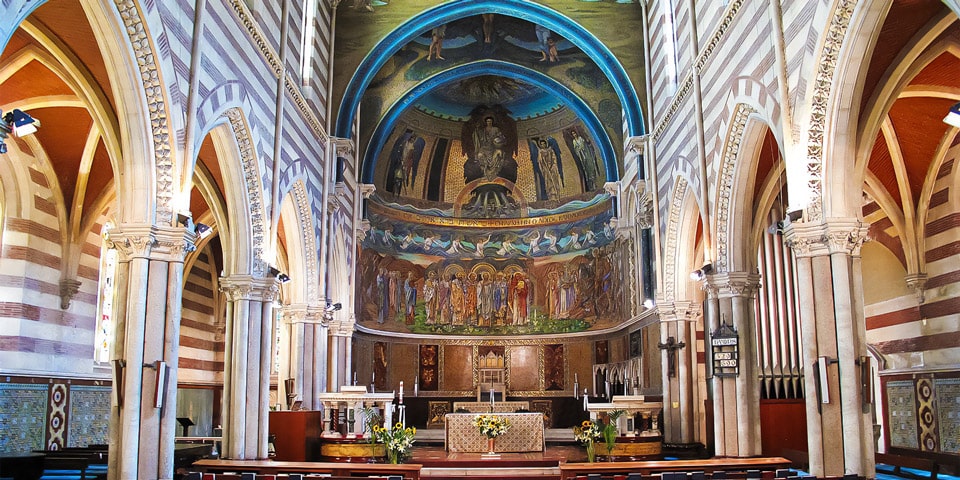

24810 views

| Tip | Every Friday, immerse yourself in Verdi's operatic masterpiece, La Traviata, at St Paul's Within the Walls in Rome. Enjoy this breathtaking performance in a sacred space at the heart of the city. The show starts at 20:30, and it's recommended to book at least a few weeks in advance. Join Sunday Mass at 10:30 in English and at 12:00 in Spanish. All are welcome, and you are invited to join community for coffee and conversation before and after the Mass! |
|---|---|
| Opening Hours |
Sunday:
-
Monday:
-
Tuesday:
-
Wednesday:
-
Thursday:
-
Friday:
-
Saturday:
-
|
| Recommended tour | |
| Address | Via Nazionale, 16a, Roma |
| Website | www.stpaulsrome.it |
St. Paul’s Within the Walls, known as San Paolo dentro le Mura in Italian, stands as a testament to the enduring legacy of Anglican presence in the heart of Rome. This historic church, consecrated in 1880, showcases a unique blend of Gothic and Neoclassical architecture, reflecting the diverse influences of its time. From its stunning facade adorned with intricate carvings to its majestic interior featuring vibrant stained glass windows, St. Paul’s Within the Walls invites visitors to explore a sanctuary of spiritual solace and cultural richness amidst the bustling streets of the Eternal City.
Contents
ToggleSt. Paul’s Within the Walls, or San Paolo dentro le Mura, has a fascinating history deeply intertwined with the Anglican community’s presence in Rome. The church’s construction began in 1873, a time of growing Anglican influence in the city, under the direction of the British expatriate community. Designed by the architect George Edmund Street, renowned for his Gothic Revival style, St. Paul’s Within the Walls reflects a unique fusion of architectural traditions, blending Gothic elements with Neoclassical influences.
The church’s completion and consecration in 1880 marked a significant milestone for the Anglican community in Rome. It was named in honor of Saint Paul, one of the foremost figures in early Christianity; St. Paul’s Within the Walls served as a spiritual sanctuary for English-speaking residents and visitors alike. Its strategic location near the Termini train station also made it a convenient place of worship for travelers passing through the city.
St. Paul’s Within the Walls has played a pivotal role in fostering dialogue and understanding between different religious communities in Rome. As one of the few Anglican churches in the city, it has welcomed visitors from diverse backgrounds, offering a space for interfaith dialogue, cultural exchange, and spiritual reflection.
Today, St. Paul’s continues to serve as a vibrant center of Anglican worship and community outreach, hosting various events, concerts, and social initiatives that enrich the cultural fabric of Rome. Its historical significance, architectural beauty, and commitment to fostering dialogue and inclusivity ensure that St. Paul’s Within the Walls remains a cherished landmark in the Eternal City.
Inside St. Paul’s Within the Walls, visitors can marvel at a wealth of architectural and artistic treasures:
Overall, a visit to St. Paul’s Within the Walls offers a profound journey into Gothic Revival architecture’s beauty and the Anglican tradition’s spiritual heritage. Visitors will find inspiration and solace within its sacred walls, whether admiring its architectural details, contemplating the stained glass windows, or reflecting on the sanctuary.
Read also about the Aurelian Walls in Rome.
Read also about the Basilica of St. Paul’s Outside the Walls.
Author: Kate Zusmann
This website uses cookies. For more info read the cookies policy
Rome.us © 2025. Created with love by Roman experts and guides.